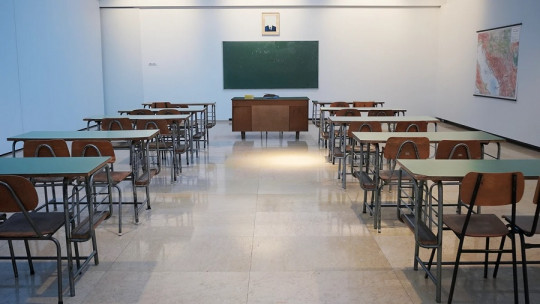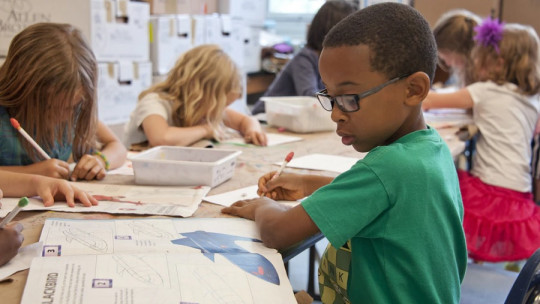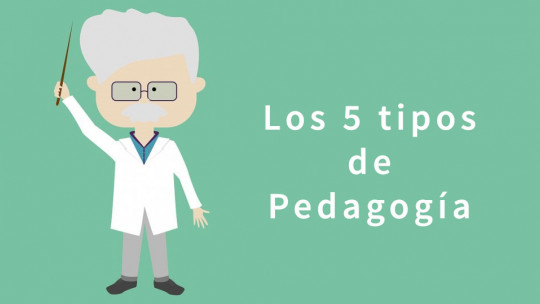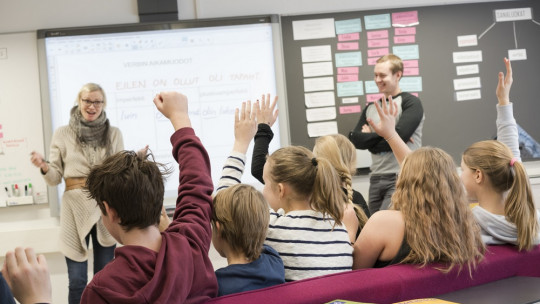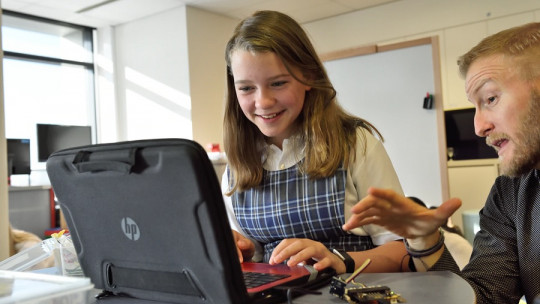
When teachers at an educational center try to plan what is going to be studied during the course, it is common to talk about aspects such as the objectives to be achieved, the content to be taught, the teaching method…
However, it is common to leave aside or ignore how to organize the knowledge that is going to be presented during the year, limiting itself to teaching it one after the other and with the sole intention of hoping that the students manage to memorize it and demonstrate it in an exam. .
In recent years there has been an attempt to change this way of teaching, trying to promote meaningful learning by ensuring that what is taught in class is not only memorized, but that it is understood and knows how to relate it to other knowledge. It is in this context that it takes special importance the concept of a spiral curriculum, a way of organizing knowledge of the academic year which we are going to see in more detail in this article.
What is a spiral resume?
The spiral curriculum is an educational program in which a review is made of the knowledge previously explained during the course This review is done iteratively, that is, in class the notions and themes seen previously are repeatedly addressed.
One should not fall into the mistake of thinking that this type of curriculum implies the mere repetition of the knowledge given over and over again in a superficial way, expecting the students to memorize point by point and comma by comma what has been explained to them. The spiral curriculum aims to establish knowledge by deepening it inviting reflection and research.
The first person to describe this idea was Jerome Bruner in 1960. This New York psychologist observed that teachers who taught mathematics, history and science and managed to successfully transmit their knowledge shared, to a greater or lesser extent, the following teaching methodology.
First, they presented a series of ideas or basic operations in an intuitive way. After these basic notions were mastered, they were gradually reformulated with greater complexity, in addition to being connected with other previously acquired knowledge. As a result of this process, the aforementioned subjects were satisfactorily learned, no matter how much content they had and how difficult they may seem.
With this method of organizing knowledge, Bruner defended the idea that courses should be promoted around the learning of socially valued issues, principles and values. The end of it was enable students to learn useful knowledge, which they know how to apply in their daily lives and will make it easier for them to function as socially adapted adults.
Key Features
The main characteristics of this type of educational curriculum are described below.
1. Content review
Throughout the entire course, students see the same theme or idea on several occasions.
Throughout the entire course, students revisits, on several occasions, the themes already given previously
Thus, by repeating the explanations of knowledge, it is possible to see to what extent the students have learned it and detect any possible doubts they may have.
2. Progressive difficulty
At first, the theme is introduced in a simple and basic way with the intention that students can get a general idea about the given notion.
Later, when the topic is discussed again, it will be done in a way in which there is more complexity, introducing more details and increasing the difficulty.
Thus, as the complexity of the syllabus progressively increases, learning occurs in a more fluid way, without running the risk of the student getting burned out by not understanding what is new explained in class.
3. The new is related to the old
New information and skills are introduced, which are related to the knowledge given in previous phases of the spiral.
What was learned at the beginning of the course, that is, in the first loops of the spiral, It is directly linked to what will be learned later
If the first knowledge is properly introduced, the student will not feel oversaturated when it is explained again in a more complex way in the future.
4. Increases the skills of the students
Each time knowledge is revisited, the student’s competence increases until reaching the objective agreed in the curriculum.
Benefits of spiral resumes
As has been seen, the design of spiral curricula involves a series of well-differentiated characteristics compared to how teaching has been approached from the traditional perspective and its linear form when organizing knowledge. These differences from the spiral method offer, in turn, benefits, which are:
1. Reinforcement of what was learned
Many teachers often complain that, despite teaching a topic that was supposed to have been covered before in other courses, students often say something like ‘I know I taught it but I don’t remember what it was about’.
In the spiral curriculum, as we have already commented, there is a controlled repetition of the given knowledge
Although the strategy is not to repeat endlessly what is given in class, it is true that the more repetition it is, the less likely it is that the given content will be forgotten.
2. From simple to complex
The topics that will be addressed during the rest of the course are introduced in a way that is simple enough to prevent students from becoming oversaturated or burned out as soon as they begin.
One of the factors that influence school failure is the feeling that what is given in class is out of the person’s reach feeling a combination of negative emotions such as anxiety and irritability, which contributes to not being interested in studies or the topic in question.
Starting from the basics and easily accessible, the level of difficulty increases, which has two great advantages.
The first is that the student feels that he is in control of the situation and that it is not so difficult for him to learn the new knowledge because he already masters the previous one.
The second is that notice that you are, progressively, learning more and more being an aspect that contributes to the development of positive emotions and, in addition, promotes motivation and interest in learning more.
3. Integration
Traditionally, teaching has been done in such a way that the content of the subjects was shown completely independently of each other. Even within the same subject, the content seen one year was radically different or not at all related to that of subsequent years.
For example, It is common that in high school, chemistry and biology subjects are explained completely separately without using as an interesting nexus topics such as organic chemistry and the fluids of the digestive system, to give an example.
Another case, this time within the same subject, is how biology is usually taught in high school. The first year focuses on the anatomy and functioning of the systems and apparatus of the human body, while the following year focuses on the chemical composition of the organism and the structure of DNA.
With the spiral curriculum method, it is not only intended to interrelate the knowledge given in the courses of the same subject, but also It is intended to relate to other subjects
This integration is a great advantage since knowledge applied to real life does not distinguish between subjects or disciplines On a day-to-day basis, what is learned is applied in various contexts and without borders.
4. Logical sequence
Although this advantage may seem identical to that of traditional linear education, there is a nuance to take into account.
In linear education, a sequence is followed in which knowledge follows one after the other, according to the teachers’ preferences.
Here, in the spiral curriculum, this sequence can also imply that knowledge follows one after the other, but after a while The passage of the classes through this knowledge will be repeated, and the level will be increased There is a hierarchy and a progressive increase in difficulty, and this difficulty is based on what the students have been seen to have learned.
5. Higher level objectives
In traditional education, what is sought is for students to memorize what is given in class and present it in an exam or in a paper.
On the spiral resume Students are invited to participate in their training showing them that the things seen in class will always have a higher degree of complexity, which invites them to investigate on their own.
For example, related to the previous example about biology, at the beginning of the course the respiratory system can be explained. In future classes, you can explain that there are certain diseases that affect this system, inviting them to look for medical problems related to breathing on their own and what treatments exist for each of them.
6. Flexibility
This type of curriculum is flexible, since it takes into account what the students assimilate being able to modify the level of difficulty of the following phases of the spiral, in addition to modifying the content to be related.
Thus, no one is left behind and it is guaranteed that everyone has well-established knowledge, in addition to facilitating constructive learning.


